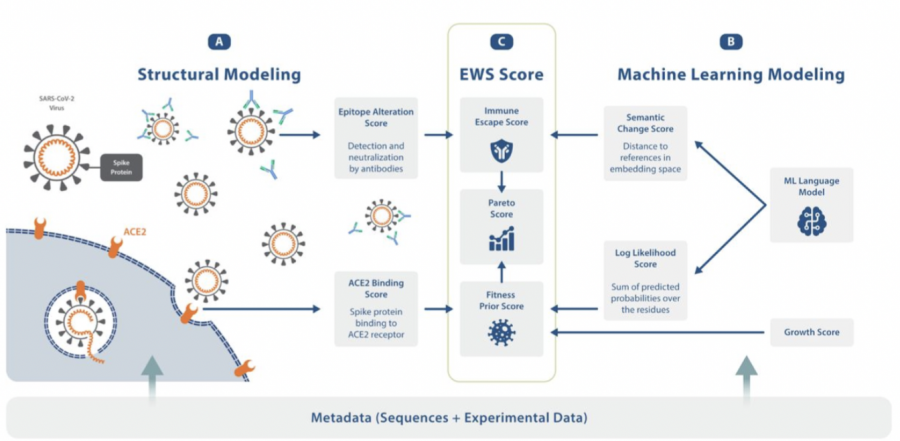
BioNTech and InstaDeep have developed an “early warning system” to identify new dangerous variants of the coronavirus. The system has identified 12 out of 13 coronavirus variants that the World Health Organization has identified as potentially dangerous.
The system aims to identify potential high-risk options early to alert researchers, vaccine developers, health authorities and policy makers. The system identified two modifications of the omicron strain as potentially dangerous on the same day when its genetic sequence was first published.
The system consists of two parts. The first part of the system predicts the structure of the spike protein variant from the DNA sequence. Based on this simulation, the system evaluates the strain by two indicators: how easily the spike protein clings to the receptor used to penetrate human cells, and how easily antibodies existing in the human body can bind to this spike protein, preventing infection of cells with a virus.
The second part of the system takes a DNA sequence and processes it as if it were a kind of language. She then uses natural language processing techniques to study how much the DNA sequence for the spike protein of a particular variant is similar to other known spike proteins of the coronavirus.
The resulting metrics are then combined into two cumulative estimates. One of them determines how likely a variant is to avoid a natural or vaccine-induced immune response. The second estimate shows how likely it is that the strain will be able to dominate other known strains.
Based on these estimates, the strains are ranked. Those strains that had higher ranks compared to most other known variants that were spreading at that time are considered potentially dangerous variants.